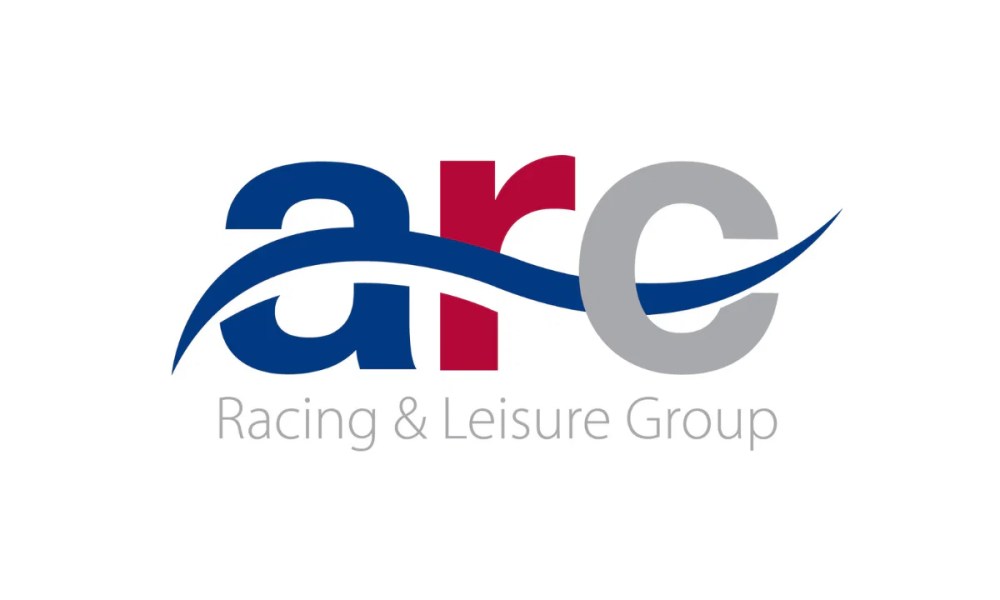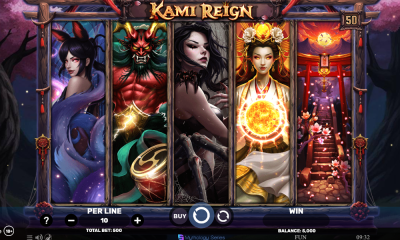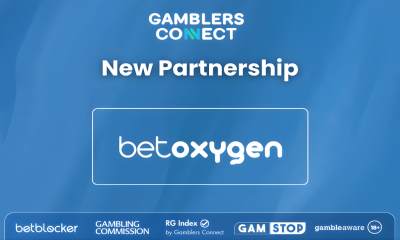Gaming
How game studios can avoid common network and infrastructure issues

Mathieu Duperré, CEO and Founder of Edgegap
It’s common for video game developers to launch a day-one patch for new releases after their games have gone gold. The growing size of video games means it’s inevitable that some bugs will be missed during the QA period and go unnoticed until the game is in players’ hands.
Some of the most common issues experienced by game developers at launch are related to network and infrastructure, such as the connection issues causing chaos in Overwatch 2 and Call of Duty: Modern Warfare 2, as some players experience issues connecting to matches. And while there’s no way of eliminating lag, latency and disconnects from multiplayer games, developers can minimize the chances of them occurring and the disruption they cause by following a few simple steps.
Plan for the worst, expect the best
For many video game developers, the best-case scenario for the launch of their game – that it’s a huge hit and far more people end up playing it than they expected – can also be the worst-case scenario for infrastructure-related issues. An influx of too many players can lead to severe bottlenecking, resulting in lag and connectivity issues. In a worst-case scenario, servers become overloaded and stop responding to requests, usually leaving players unable to connect to online matchmaking.
Another worst-case scenario is planning for big numbers at launch and building the necessary infrastructure to support this, only for your game to launch and have nowhere near the traffic you were expecting. Not only is this a big problem for your bottom line, but things can get worse if you rush your search for an infrastructure provider and forget to read through the T&Cs properly.
Some infrastructure suppliers will onboard new studios on a fixed contract, not letting them scale back if they’ve overprovisioned their servers. Some infrastructure providers offer a lot of free credits, to begin with, only for those credits to expire after the first few months. Game studios then discover they’re responsible for fronting the cost of network traffic, load balancers, clusters, API calls, and many more products they had yet to consider.
With that in mind, try not to sign up for long-term agreements that don’t offer flexibility for scaling up or down. Your server setup has a lot to gain by being flexible, and your server requirements will likely change in the weeks following launch as you get a better idea of your player base; under-utilized servers are a waste of money and resources.
Test, test, and test again
You haven’t tested your online matchmaking properly if you’ve tested your servers under the strain of 1000 players, but you’re expecting 10,000 or 100,000 at launch. Your load tests are an essential part of planning for the worst-case scenario, and you should test your network under the same strain as if you suddenly experienced a burst in players.
Load testing is important because you’ll inevitably encounter infrastructure issues as your network comes under strain. Still, it’s only by facing those issues that you can identify them and plan for them accordingly once your game launches.
Similarly, you want to test your game in as many different locations as possible because there’s no way of telling where your traffic will be coming from. We’ve had cases where studios released a very popular game overnight in Chile but needed data centers. Thankfully, you can mitigate issues such as these by leveraging edge computing providers to reduce the distance between your players and the point of connection.
Consider the specific infrastructure needs of your game’s genre
Casual games with an optional multiplayer component will have a completely different network requirement to MMORPGs, with thousands of players connected to a centralized world. Similarly, a first-person-shooter with 64-player matchmaking will have a different network requirement than a side-scrolling beat ’em up or fighting game, which often requires custom netcodes due to the fast-paced nature of the combat.
People outside the video game industry assume all video games have similar payloads, but different game genres are as technically different in terms of infrastructure requirements as specific applications.
With that in mind, it’s essential for game studios, especially smaller ones, to regularly communicate with infrastructure partners and ensure they’ve got a thorough understanding of how the multiplayer components of your game will work. A decent infrastructure provider will be able to work with you to not only ensure load testing is carried out correctly but also help diagnose any broader issues.
Too many tools and not enough resources to use them
One thing that large network providers are very good at providing is tools, but these are often complex and require specific knowledge and understanding. It’s worth noting that large game studios have dedicated teams of engineers to manage these tools for AAA games with millions of players.
Smaller studios need to be realistic about the number of players they expect for new game releases and their internal resources to manage network and infrastructure-related issues and queries. You should partner with a provider that can handle all of this, so your studio can focus on making the best game possible. The more automation you can plan into your DevOps methodology, the better!
Takeaways for small game studios
While game studios likely encounter many issues as part of their game development journey, working these three pieces of advice into your DevOps pipeline is a sure way of minimizing infrastructure-related headaches.
Don’t reinvent the wheel – We’ve seen many studios trying to build bespoke systems rather than automate and use what’s already out there. If you can develop your netcode, engine and manage your Kubernetes, that’s great! But is it necessary, or is building these things from scratch just going to create trouble further down the line?
Understand your workflows – Plan for everything, use tech-agnostic vendors to remain flexible, get real-time visibility and logs for your matchmaking traffic, and have a 24/7 support plan for when your game is live. The more potential problems you’re aware of, the better.
Load testing your game – Build tiny tools and scripts to generate as much traffic as you can, breaking your system as often as possible.
Powered by WPeMatico
Arena Racing Company
Arena Racing Company awarded United Arab Emirates Gaming-Related Vendor License

Arena Racing Company (ARC) has been granted a Gaming-Related Vendor license from the United Arab Emirates’ General Commercial Gaming Authority (GCGRA), an independent entity of the UAE Federal Government with exclusive jurisdiction to regulate, license, and supervise all commercial gaming activities.
The license, operational with immediate effect, affords ARC the opportunity to provide its products and services to licensed operators in the region. Notably, the Racing1 Markets service, an all-in-one horse and greyhound racing solution delivered in conjunction with Racing1 alliance media rights partners at 1/ST CONTENT, Racecourse Media Group (RMG), and Tabcorp, alongside technical partner Pythia Sports. ARC has been added to the list of licensed vendors as per the GCGRA website.
Jack Whitaker, Commercial Manager at ARC, said: “Obtaining this license is a great achievement for ARC and its Racing1 partners. The emerging regulated UAE market is incredibly exciting, and we look forward to showcasing our innovative products and services in the region.”
The post Arena Racing Company awarded United Arab Emirates Gaming-Related Vendor License appeared first on Gaming and Gambling Industry Newsroom.
Battle of the Tribes
POLYTOPIA WORLD CHAMPIONSHIP 2025 BREAKS RECORD PARTICIPATION AS FINALS DRAW CLOSER

Reading Time: 2 minutes
Celebrated strategy game The Battle of Polytopia confirms its first ever World Championships has exceeded expectations with over 10,000 sign-ups in its qualifying rounds. While no stranger to tournaments, previously hosting smaller scale, local tournaments called ‘Polysseums’, developer Midjiwan’s first step into global esports has been met with extreme success. The inclusive esports event has a $10,000 prize pool and will conclude on 6 December 2025, 14:00-21:00.
The finals will take place in front of a live-studio audience, with expert commentary and a chance to peek behind the scenes at Midjiwan itself. First place will receive $4,000, the runner-up will take away $2,000, the third and fourth place finishers will get $1,500, and the fifth and sixth place $500.
The Polytopia World Championship 2025 is being hosted by eSports platform, Challengermode, who Midjiwan has relied on for its monthly local tournaments since 2022. Midjiwan also partnered with Black Molly Entertainment to help organise and manage the event. Black Molly Entertainment have years of experience managing eSports tournaments, with notable events including the Geoguesser World Cup and CS:GO Pinnacle Cup Championship.
Midjiwan has worked closely with its community to ensure engagement is high with each round, building a bespoke ‘Spectator Mode’ into the game so fans can watch each game live through the game itself. In the spectator mode the viewer has visibility of all players simultaneously, with stats on how many cities, technologies, kills and more available for quick access.
Christian Lovstedt, CEO of Midjiwan commented:
“Polytopia has always been about welcoming all kinds of players into the world of 4X strategy. That’s why our championship is open to everyone – not just pros with sponsors. We’ve been thrilled at the amount of interest this tournament received from our community, reaching participation numbers way beyond our expectations. We’re excited to bring the finalists to Stockholm and can’t wait to see the strategies that emerge.”
The Polytopia World Championship 2025 kicked off in September, with its ‘Battle of the Tribes’ qualifying round – weekly battles where players competed to be the best in each of the game’s 12 tribes. After an exciting six weeks, the top player from each tribe faced-off, reducing the qualifiers to six finalists. These six winners are listed down below.
|
Tribe |
Qualifying Player |
|
IMPERIUS |
ArthurL248 |
|
BARDUR |
slimmingboy |
|
OUMAJI |
Dreamlander3000 |
|
HOODRICK |
Theetat |
|
XIN-Xi |
LeLiberateur |
|
LUXIDOOR |
Meisterlampe |
Recaps of each round of the tournament prior to the finals can be watched on the official Battle of Polytopia YouTube channel.
-
Part 1: Polytopia World Championship 1st Qualifiers Wrap-Up – BARDUR, IMPERIUS, KICKOO, ZEBASI
-
Part 2: Qualifiers Wrap-Up – Oumaji Hoodrick Yadakk & Quetzali – World Champoinship 2025
-
Part 3: Final Qualifiers Wrap-Up – Xin-Xi, Luxidoor, Ai-Mo & Vengir – World Championship 2025
-
Face-off stream: https://youtube.com/live/GnU6mWPoJiY?feature=share
To watch the finals live on December 6,visit here: https://polytopia.io/stream/
To stay up to date on the Polytopia World Championship 2025, or purchase one of the limited tickets for the live event, visit the official website or join the Official Polytopia Discord.
The post POLYTOPIA WORLD CHAMPIONSHIP 2025 BREAKS RECORD PARTICIPATION AS FINALS DRAW CLOSER appeared first on European Gaming Industry News.
Betiator
Delasport Unveils a Crash Game for Sports Betting

Reading Time: 2 minutes
Leading iGaming supplier Delasport teases a one-of-a-kind sports betting crash game called Betiator – a new in-play experience that merges live sports with the tension and excitement of crash games.
Inspired by the groundbreaking casino genre, the company once again pushes the whole industry to a new phase in evolution by allowing sports bettors to play in the same easy and fun way as fellow casino players. Crash games are booming in the casino world, showing that players crave more emotional, fast, and visually engaging formats – and Betiator brings that same adrenaline-charged energy to the sportsbook.
It changes the scene by introducing a truly innovative way to bet on sports, keeping players at the edge of their seats during the game. Designed to excite both sports bettors and casino players, it marks a defining moment for innovation.
This product comes as a logical next step in the evolution of live betting and the company’s goal to disrupt the iGaming industry. It demonstrates Delasport’s successful commitment to unique innovation: a strategy they call “Going Beyond Content” –building on the success of products and features like SuperPot, My Sportsbook, My Combo, Double My Winnings, and many more.
“Sports bettors deserve the same level of innovation and excitement that casino players get all the time,” Delasport’s CEO Oren Cohen Shwartz says. “At Delasport we’re taking the whole game to a new playing field with Betiator. Live betting won’t feel outdated anymore as we’re bringing in the thrill of the casino to sports betting.”
While details about Betiator remain under wraps for now, Delasport promises a completely new way to experience live sports. Operators and partners eager to see it in action can schedule exclusive demos and discover more at ICE Barcelona 2026, taking place January 19–21, where Betiator will make its official debut.
The post Delasport Unveils a Crash Game for Sports Betting appeared first on European Gaming Industry News.
-

 Hold and3 days ago
Hold and3 days agoPragmatic Play Rings in 2026 with Joker’s Jewels Hold & Spin™
-

 iGaming News 20263 days ago
iGaming News 20263 days agoSpinomenal Rings in 2026 with Japanese-Inspired “Kami Reign Ultra Mode”
-

 Five Elements Slot3 days ago
Five Elements Slot3 days agoPG Soft Concludes 2025 with High-Volatility Launch: Mythical Guardians
-

 Latest News3 days ago
Latest News3 days agoFrom ‘Mummyverse’ to Crash Games: Belatra Reviews a Landmark 2025
-

 Bespoke Gaming Studio2 days ago
Bespoke Gaming Studio2 days agoCreedRoomz and Casumo Forge Strategic Partnership to Elevate Live Casino Experience
-

 B2B gaming software3 days ago
B2B gaming software3 days agoGamblers Connect and BetOxygen Announce Strategic B2B Partnership
-

 Button Blind3 days ago
Button Blind3 days agoStretch Network Boosts Player Engagement with Year-End Platform Enhancements
-

 card games1 day ago
card games1 day agoQTech Games Supercharges Video Poker Vertical with Speedy Tomatoes Partnership

















